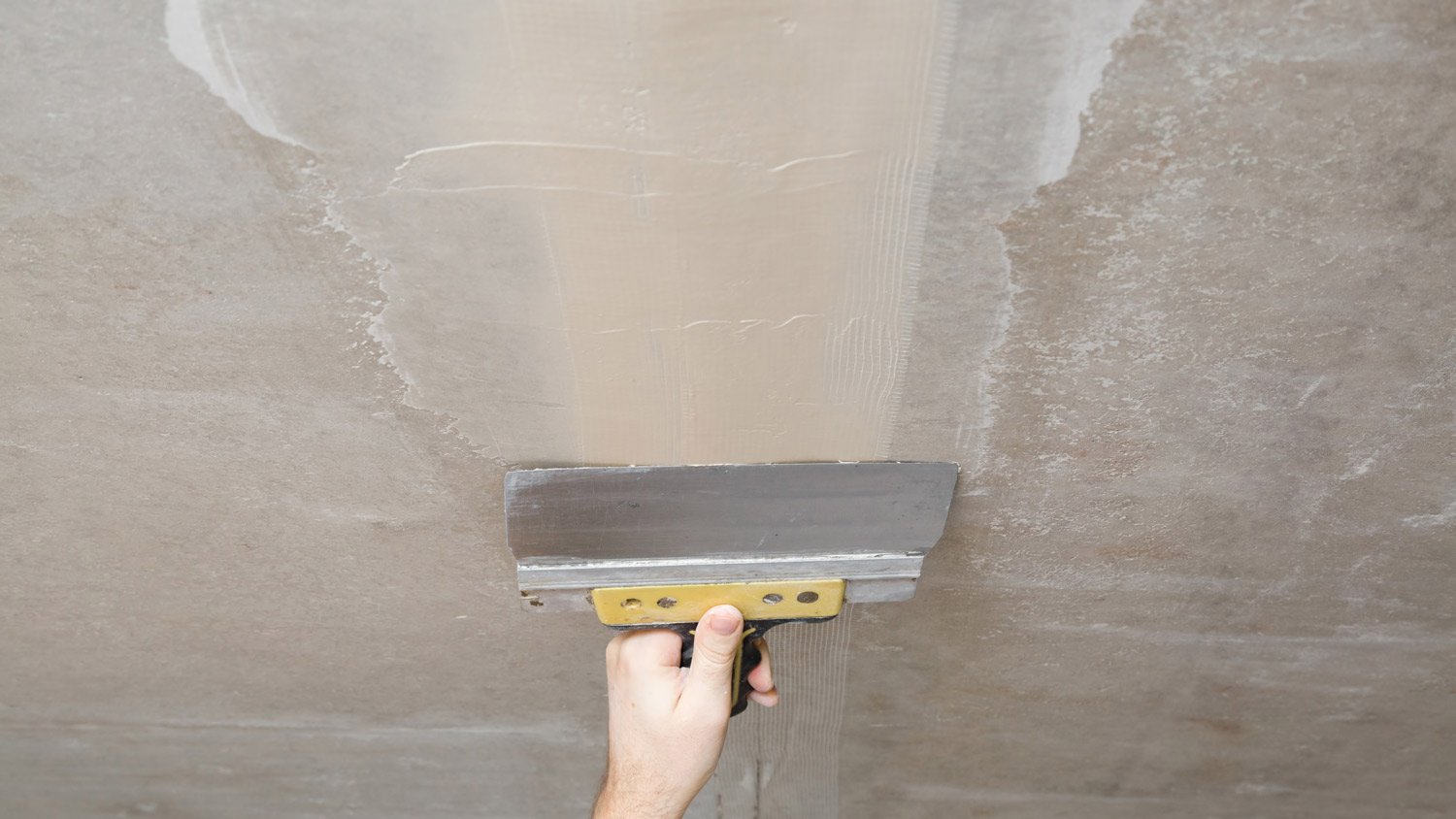
Popcorn ceiling removal costs depend on the size of your ceiling and any additional services like asbestos removal and resurfacing. Learn all the costs here.
Don’t crack under the pressure of a damaged ceiling


When you spot a crack in your ceiling, you don’t need to panic—but you should investigate to see if it’s linked to a larger underlying problem. If you’re unsure, bring in a professional to check it out. But if you’re confident that the damage is merely cosmetic, you can learn how to repair ceiling cracks yourself with this step-by-step guide.
Start by moving any furniture and other belongings out of the room. Then, lay down drop cloths to protect the floors from old, flaking drywall, joint compound, and paint.
Next, set up your ladder so that it’s stable and allows you to reach the ceiling comfortably. Before using it, make sure you’re well-versed in ladder safety.
Put on your safety goggles and mask, then climb on the ladder so that you can reach the crack.
With a utility or drywall knife, scrape off any flaking paint, joint compound, or other loose material around the crack. Be sure to work with the crack (and not across it). Cut off any damaged drywall tape and secure any loose or uneven drywall with drywall screws.
Finally, get rid of any dust by wiping down the area with a clean, damp cloth. Wait for it to dry completely before moving to the next step.
Cover the length of the crack with a single long strip of drywall tape. Make sure the crack is in the middle of the tape. This will help strengthen the repair, bond the compound, and prevent sagging.

If you bought premixed joint compound (also known as drywall mud), add some into a mud pan so that it’s easier to hold while you work. Otherwise, if you have powdered compound, mix it with water according to the manufacturer’s directions. When it’s ready, put it into a mud pan.
Use a putty knife to scoop the compound out of the mud pan. Apply it over the drywall tape, moving in one direction. Try to get the layer as thin as possible (or it might crack later on). Use a bucket of water and a damp cloth to clean any leftover compound from the knife as you go.
Let the compound dry fully, and then repeat the process at least two more times for a total of three (or more) layers. When you’re done, the compound should completely hide the crack.
After applying the last layer, let it dry for at least 24 hours.
When the compound is completely dry, it should turn white. At that point, you can sand it smooth with a drywall sanding block.
When you’re done, use a clean, damp cloth to remove all dust from the area.

Apply paint primer over the crack area to seal it and promote an even finish. If you have paint to match the color of the ceiling, repaint the cracked section. If not, you might want to paint the whole ceiling for a fresher, more consistent feel.
Fixing a minor ceiling crack isn’t terribly complicated, but it does involve climbing on a ladder and working above your head. If that’s not your thing or you have physical limitations, hire a drywall repair expert instead of tackling this project yourself.
Getting up on a ladder to work on your ceiling is dangerous. Unless you have experience and a buddy nearby to help you, call a pro to complete the job.
When you hire a ceiling repair pro near you, the average cost to repair ceiling cracks is $400 to $1,350. Meanwhile, DIY repairs are more affordable, costing up to $150.
For a small cosmetic crack, you could save money by hiring a local handyperson instead of a drywall repair company. But if you have large or widespread ceiling cracking, you should consult a general contractor. They’ll be able to determine if the cracks are related to structural issues or water damage.
From average costs to expert advice, get all the answers you need to get your job done.

Popcorn ceiling removal costs depend on the size of your ceiling and any additional services like asbestos removal and resurfacing. Learn all the costs here.

Plaster repair costs are determined by the size and type of damage. Discover why some fixes you can DIY and why some require a pro’s help.

The cost of plastering walls and ceilings depends on the room size and ceiling height. Our tips can help you estimate an accurate cost.

Find out what causes ceiling cracks, including general wear and tear, water damage, roof truss uplift, and issues with your foundation.

Hairline cracks and spiderweb cracks are just two of many types of ceiling cracks. Read this guide to learn which ceiling cracks are serious and need repairs.

Plaster has been around for a very long time. Here’s what you need to know about this ancient and adaptable building material.